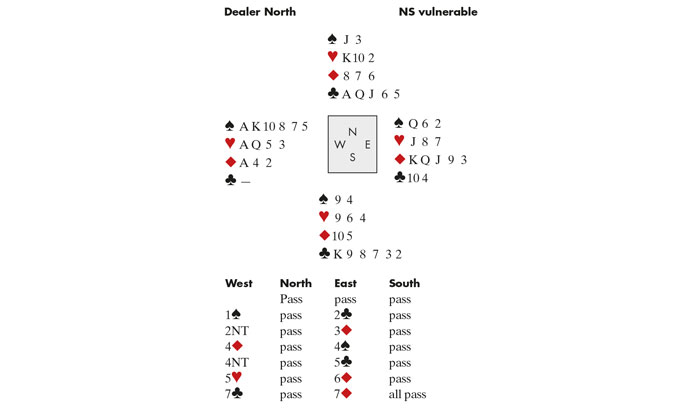It often strikes me that learning to bid is just like mastering a language. As you take on new conventions and deepen your understanding of what different bids convey, you can begin to communicate properly. Things are complicated by the fact that there are so many different dialects — how much simpler life would be if we could all play the same system and the same conventions, instead of having to agree on them afresh with every new partner. All the effort is worthwhile, though, when you realise the eloquence that can be achieved. At the top level, well-honed partnerships are able to convey their hands so accurately that they may as well just show each other their cards. Take this deal from the 2015 World Senior Teams Championship. Playing for the USA, Zia Mahmood was West and Michael Rosenberg East:
Playing 5-card majors, Zia opened 1♠. Rosenberg’s 2♣ was ‘Drury’, showing a spade fit. Zia’s 2NT rebid was a slam try. Rosenberg bid 3♦ to show a good diamond suit, and Zia raised to 4♦. With a double fit established, 4NT was ‘Six Key Card Blackwood’, checking for honours in both suits. 5♣ showed 1 keycard (the ♦K). Zia’s 5♥ asked for the diamond or spade queen. 6♦ showed both. Zia now bid 7♣: ‘pick a grand slam’. And with 7♦, Rosenberg hit the top spot — better than 7♠, which relies on a heart finesse. South led a heart. Rosenberg won with the ♥A, led a diamond to the king, ruffed a club, cashed the ♦A, came to the Q♠, drew the last trump and claimed. Now that’s what I called being fluent!






Comments